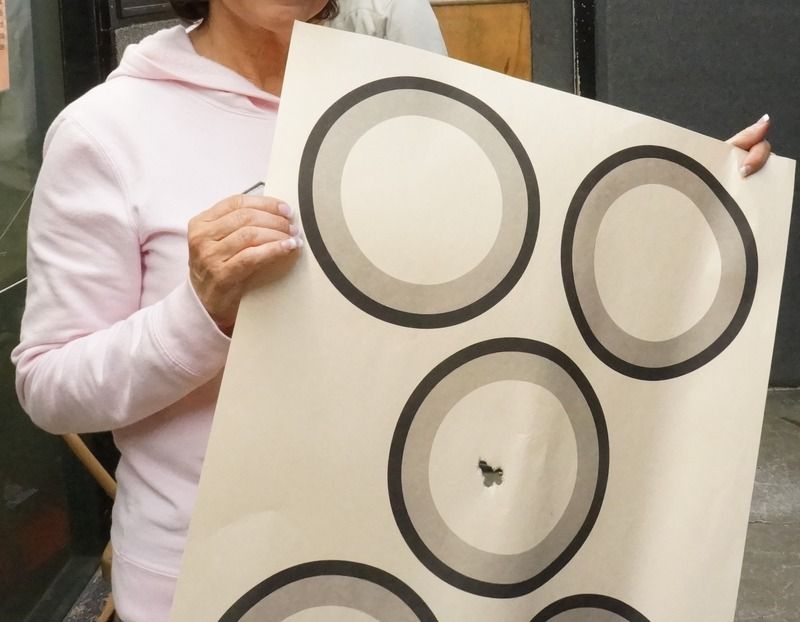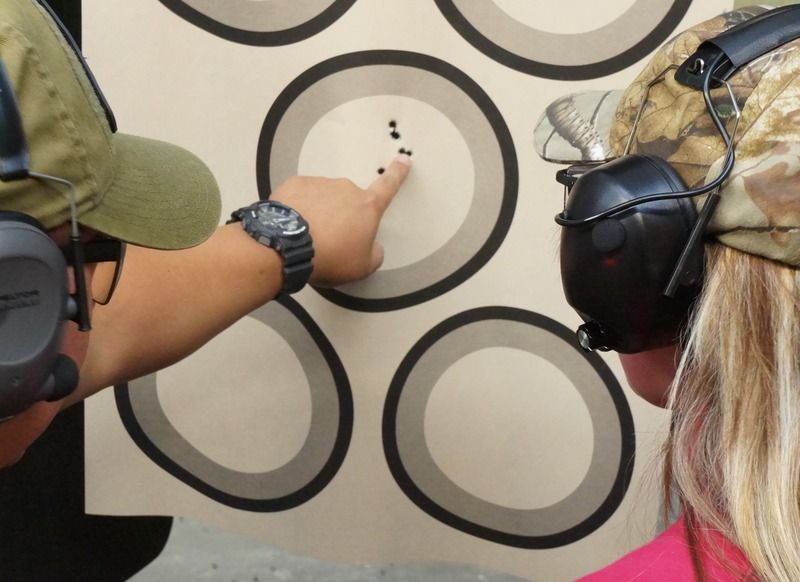rwilson452 said:
....I can't get him to stop jerking the trigger....
How do you describe a trigger press? The way things are explained, and the words used, can make a difference. Words have meanings; different words are understood differently; and the different ways different words are understood can translate to performing the actions described by those words differently.
I'm with a group of instructors who put on monthly Basic Handgun classes. Many of our student had never touched a gun before. This is essentially how we explain trigger control:
- The first principle of accurate shooting is trigger control: a smooth press straight back on the trigger with only the trigger finger moving. Maintain your focus on the front sight (or the reticle if using a scope) as you press the trigger, increasing pressure on the trigger until the shot breaks. Don't try to predict exactly when the gun will go off nor try to cause the shot to break at a particular moment. This is what Jeff Cooper called the "surprise break."
- By keeping focus on the front sight and increasing pressure on the trigger until the gun essentially shoots itself, you don’t anticipate the shot breaking. But if you try to make the shot break at that one instant in time when everything seem steady and aligned, you usually wind up jerking the trigger.
- Of course the gun will wobble a bit on the target. It is just not possible to hold the gun absolutely steady. Because you are alive, there will always be a slight movement caused by all the tiny movement associated with being alive: your heart beating; tiny muscular movements necessary to maintain your balance, etc. Try not to worry about the wobble and don’t worry about trying to keep the sight aligned on a single point. Just let the front sight be somewhere in a small, imaginary box in the center of the target. And of course, properly using some form of rest will also help minimize wobble.
- In our teaching we avoid using the words "squeeze" or "pull" to describe the actuation of the trigger. We prefer to refer to "pressing" the trigger. The word "press" seems to better describe the process of smoothly pressing the trigger straight back, with only the trigger finger moving, to a surprise break.
When teaching shooting to someone with no experience one thing we need to teach is how to apply pressure to the trigger to make the gun fire, but without disrupting the alignment of the gun on target. It's easy to make the gun fire if you don't care about hitting what you want to hit. It's hard, at least for many, to do so without causing the gun to go off target. So we need to find ways to explain the way to make the gun fire without disrupting it, and we need find ways to do so that help the student translate the description into consistent, repeatable action.
We've found in our classes that using the concepts I outlined abouve really do work. This group (six rounds at seven yards) was fired during the last part of the live fire period at one of our Basic Handgun classes. It was fired by a middle aged woman who attended our class with her two adult daughters. She had never fired a handgun before our class; she had fired a rifle only a few times. It was fired with a Ruger Red Hawk -- three rounds in .44 Special and three in .44 Magnum.

And here is one of her daughters looking with an instructor at a group of six shots she had just fired at seven yards with a Colt Python (three rounds of .38 Special and three of .357 Magnum). She had never fired a gun before.

While everyone doesn't do that well pretty much everyone is shooting 2 to 2.5 inch groups -- even those students with no prior experience. On occasion we have student who doesn't seem to be getting it. In those situations the technique described by JT-AR-MG42 -- the instructor pressing the trigger over the trigger finger of the student -- works very well.


